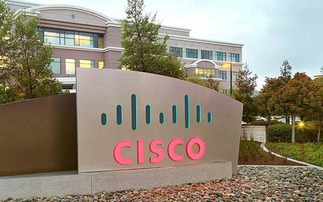
Standards and Policies
GCP and Azure scored almost identically here, taking 9 and 8 points respectively out of a maximum of 10. A differentiator in this quadrant is the Science Based Targets Initiative. Microsoft and AWS made commitments to SBTI several years ago, but have since had them removed, meaning that they pledged a target but then failed to provide the detail of how they intended to get there.
Both Amazon and Microsoft were invited to comment about this. Amazon referred us to a statement published last August and Microsoft to one published in March this year.
AWS scores badly across multiple metrics in this quadrant. The company provides next to no detail on how it aligns and furthers the UN Sustainable Development Goals (SDGs), and has a less developed toolset than its competitors for its customers to assess the impact their use of AWS has on their carbon footprint.
When Computing asked Amazon to comment, the company said it is currently assessing how indirect emissions can be incorporated into this tool.
Environmental reporting standards for Amazon suppliers are less stringent than those of Google and Microsoft, although Amazon has committed to ask suppliers to report on carbon emissions from next year.
Emissions and water
This the most heavily weighted aspect of our analysis, with 20 points available. Interestingly, all three hyperscalers score almost equally, with GCP and Azure scoring 10 points and AWS 9.
The biggest difference is in the criterion of GHG emissions reduction against targets, where Google picks up four of the available five points. The organization has cut its scope 3 carbon emissions, to less than they were in 2018, despite growing as a business. Crucially, the company managed to reduce its location-based scope 3 emissions. See here for a detailed explanation of the difference between location- and market-based emissions.
Google was less successful at reducing its scope 1 (which doubled due to the company including a source of emission that hadn't previously been included) and scope 2 emissions, which are primarily made up of emissions related to electricity consumption.
Microsoft only picked up three points here because all emissions categories grew, but by less than expected relative to company growth. The growth in scope 3 emissions was also partially explained by more reporting accuracy. This picks up emissions that have previously been unreported, so whether it represents genuine emissions growth is a moot point. The company purchased sufficient offsets to present this a small reduction in emission - more on this later.
In common with Microsoft, Amazon's reporting presents a narrative of slightly reduced overall footprint despite much higher company growth. Like its closest cloud competitor, Amazon's emissions have grown; the impression of a reduction has been enabled by means of offsetting, mainly of scope 2 emissions. Crucially, Amazon doesn't provide a reason for increased emissions, which is why it only scores 1 point out of the available 5.
AWS picks up points on built emissions and innovation. AWS has pioneered the use of recycled steel and lower carbon concrete in its datacenter construction, and this will scale. Given the fact that these foundational industries account for around 20% of global CO2 emissions, a company of Amazon's size and scale de-risking the use of more sustainable building materials could prove to be a genuine driver of global emissions reduction. Amazon's Graviton-3 chip could also be a game changer by enabling much more efficient computing.
AWS also picks up a point against its competition in the water metrics, although only by providing a Water Usage Efficiency (WUE) rating, which neither Microsoft nor Google provide. However, Amazon does not reveal overall water consumption.
Google chooses to provide this data in gallons rather than liters. Google datacenters consumed 5.2 billion gallons of water in FY22. Microsoft's water consumption over that year is given at 6,399 megaliters. When you convert Google's gallons into megaliters (one megaliter = one million liters), you arrive at 19,759 megaliters.
Google's vast water use is likely to relate to datacenter cooling, an area where Google provides less information than either Microsoft or Amazon. In terms of our research, it's Google's biggest weakness. The decision to publish in gallons rather than liters looks cynical.
We reached out to Google for comment on the topic of water use and a spokesperson responded:
"We constantly look for more efficient ways to use water, using data through our water risk framework (released December 2023) to understand local hydrology and engaging with local experts to find the best solution for each community.
"We also invest heavily in our datacenter systems and operations, which we're continually reviewing and improving, to maximize efficiency with the water that we do use. And wherever we use water, we are committed to doing so responsibly. This includes using alternatives to freshwater whenever possible, like wastewater, industrial water, or even seawater. We utilize reclaimed or non-potable water at more than 25% of our data center campuses."
Circular economy
Google wins this quadrant hands down. The company earns points by providing data on the proportion of their datacenter equipment, which consists of refurbished stock (21%), and on having a high landfill diversion rate. Google provides more evidence of circularity within its operation than its competitors, and both Microsoft and Amazon provide limited data on waste, particularly electronic waste. There is narrative from both companies about efforts to recycle components, but insufficient data to make a judgement.
Both Microsoft and Amazon were asked for comment. Microsoft did not offer any additional comment, and Amazon provided an absolute number of 379,635 components used in datacenters coming from refurbished stock in 2023. This is good, but as we are unable to judge the proportion of overall components this constitutes (given AWS's size it is likely a vanishingly small proportion of the total) it has not changed Amazon's score in this metric.
Transparency
Here, Microsoft and Google both take 7 points out of an available 10, while Amazon takes 4.
Amazon's data is harder to access than its competitors'. Finding data on location-based carbon emission involves finding assurance letters in the main report appendix, and then finding the appendix of those letters where the calculations are shown. None of this is signposted from the main data tables in the report – the reader must seek them out.
Microsoft also loses points on carbon accounting, because the company admits to having used unbundled renewable energy certificates (RECs) to offset their increased emissions. This is carbon accounting at its most cynical. Unbundled RECs are contractual instruments, but separated from the unit of renewable energy that once accompanied them. They are disconnected from the supply of renewable energy, so cannot credibly be used to offset demand.
Microsoft says within its report text that it plans to phase out the purchase of unbundled RECs, presumably because the company is aware of this credibility gap. What is disappointing is that it's using them at all. Power Purchasing Agreements (PPAs) are a much more credible offset because they drive additionality.
All three of the big cloud providers show a gap between their stated ambitions to be carbon neutral (or negative) and water positive in their operations by 2030 (2040 in Amazon's case) and the reality of their environmental impact. Microsoft has even pledged to have neutralized all historical carbon emissions by 2050. The sustainability gap varies in size from cloud to cloud, but this year, Google has unquestionably made the biggest leap forward in terms of progress towards target.
This article originally appeared on our sister site Computing.

















